Talk given at Fairhall House, Melbourne, 25 June 2014.

Talk given at Fairhall House, Melbourne, 25 June 2014.

10 May 2014 (evening), Joan Sutherland Theatre, Sydney Opera House
It is a long time since I have had a seat in the circle for a ballet performance (in any theatre come to think of it), but that’s where I was seated at the Sydney Opera House for Imperial Suite, the Australian Ballet’s mixed bill of Ballet Imperial and Suite en blanc. It was certainly exciting to see Ballet Imperial from that vantage point. Looking down on a George Balanchine work gives a stunning view of the patterns of his choreography—the circles, squares, diamonds, straight lines, and flowing waves of dancers threading their way through the arched arms of other dancers—provided of course that the work on view is well danced and well staged. Which it certainly was at this performance. The ballet was beautifully led by Lana Jones and Adam Bull, with Jones the shining ballerina and Bull the gallant Balanchinian partner.
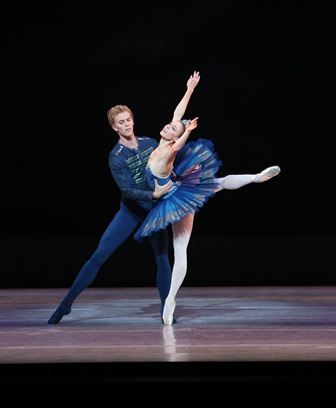
There were some particularly lovely moments in the pas de deux in the first movement. I loved the backwards hops on pointe with the leg in arabesque after Jones rose from a swoon-like fall with her arms around Bull’s neck, and also a little later her lift of the leg to second position followed by a slow pull in to retiré, followed by the same sequence of movement on the other side but at double speed. Both were exciting to watch and Balanchine is so good at showing these things more than once so we don’t miss them! And of course Bull was there supporting all these technical feats. Both dancers allowed us to see Balanchine’s exquisite musicality.
Hugh Colman’s new tutus are just gorgeous. Regal in blue and black and one or two complementary shades for the soloists, they are made with sharp lines to the skirt so they seem to represent the cut of a diamond or other precious stones, and they are decorated with a silver sash-like decoration at the back. Very imperial!
What a joy the performance was and it inspires me to say ‘thank you, thank you’. And with Eve Lawson on board as a repetiteur with the Australian Ballet—and what an asset she is—I am looking forward to (or perhaps ‘hoping for’ are better words) a revival of Theme and Variations soon.
Serge Lifar’s Suite en blanc closed the evening. It is certainly a classically-based work and has many interesting features. Its opening scene as the curtain rises, with dancers arranged on several levels on the stage and clad in various white costumes with a very slight touch of contrasting black, usually generates a round of applause, as it did on this occasion. But Lifar’s limitations as a choreographer are, perhaps unfortunately, highlighted by placing Suite en blanc on the same program as Ballet Imperial. Suite en blanc looks very static in comparison and movement is in no way a static event.
Nevertheless, there were some outstanding performances from some cast members and it is always special to see good dancing. Amber Scott and Rudy Hawkes performed stylishly in the pas de deux and Scott was a stand-out in the ‘Variation de la flûte’. But I especially admired Ako Kondo for her technical accomplishments in the ‘Pas de cinq’ and Laura Tong for a beautifully languid and delicious ‘Variation de la cigarette’.
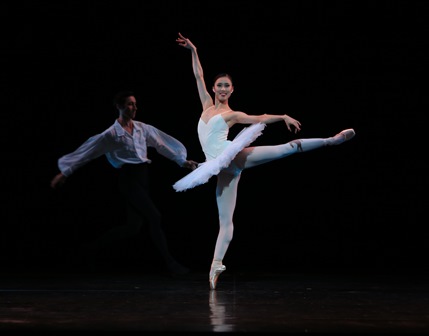
Michelle Potter, 11 May 2014
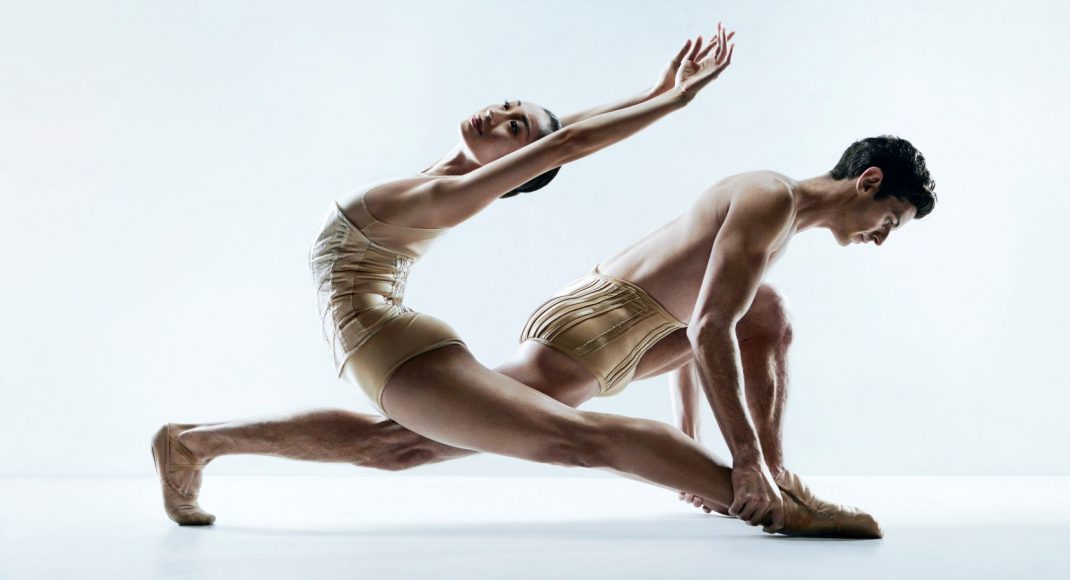
10 May 2014 (matinee), Joan Sutherland Theatre, Sydney Opera House
What an inspiring performance the Australian Ballet gave of Wayne McGregor’s Chroma. Not an easy ballet to bring off, but all the diverse features that make McGregor’s choreography so eminently watchable were there. Limbs extending through space, off-centre partnering, moves that were in turn twisted, contorted, angular and sometimes smooth and undulating. And all were all set cleanly and articulately against John Pawson’s stripped back, white box space with its rectangular ‘window’ of changing colours. McGregor is a master at exploiting the balletic body to produce astonishingly shaped movements—movements of the twenty-first century perhaps? What I especially like is that his choreography make us see how perfectly amazing the balletic vocabulary can be.
I particularly admired Vivienne Wong’s performance throughout the work and also a powerful trio from Brett Chynoweth, Rudy Hawkes and Andrew Killian—fast, assertive dancing from them all. But it was a duet from Lana Jones and Daniel Gaudiello that stole the show for me. McGregor’s choreography suits Jones with her strong, unassailable technique and Gaudiello has such a way of adding his own signature to everything he does while still remaining true to the intentions of the choreographer.
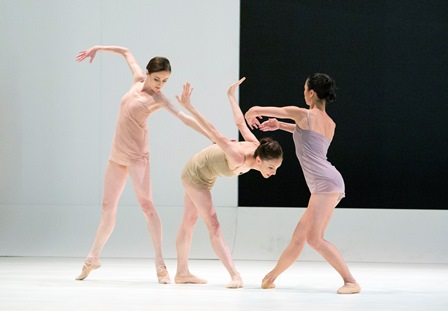
Stephen Baynes’ new work, Art to Sky, began with some lovely, lingering choreography, beautifully performed by Leanne Stojmenov and Gaudiello again. It was romantic, softly falling from step to step. The corps de ballet also had some memorable choreography in the opening sections, surprising at times and always pure and fresh. But after that there were a few too many somersaults, cartwheels and legs in the air, not to mention twee sections of humour that didn’t quite work. It is a little problematic too that one of George Balanchine’s most exquisite ballets (in my mind anyway) is Mozartiana danced to the same music, Tchaikovsky’s Mozartiana, that Baynes chose for Art to Sky. Balanchine has a habit of lingering in the mind, making it hard to accept anything else to the music he uses.
Hugh Colman’s shadowy, upstage portal that comprised the set, lit by Rachel Burke to give a hint of the mysterious, were strong additions to the look of Art to Sky. Colman, Burke and Baynes work well together as collaborators and bring a sense of visual cohesion to each other’s work.
The program concluded with Jiří Kylián’s companion pieces, Petite Mort and Sechs Tänze and it was a treat to see some more Kylián back onstage with the Australian Ballet. It was interesting to have Kylián on the same program as McGregor, as also happened last year with Bella Figura and Dyad. Kylián, too, pushes the dance vocabulary and gives us a surprising array of movement, but he adds a degree of humanity and humour to his works that McGregor passes over (at least in Chroma, although perhaps not to the same extent in others of his works).
This mixed bill was a relief from the full-length ballets that we are told draw the best houses. To me the house looked pretty much full for what was a diverse and well danced program. I’d like more in this vein.
Michelle Potter, 11 May 2014
Featured image: Natasha Kusen and Andrew Killian in a study for Petite Mort. The Australian Ballet 2014. Photo: © Paul Scala
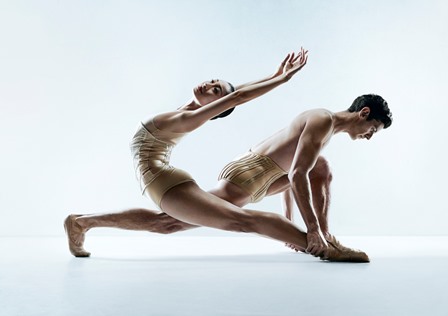
Gailene Stock, most recently director of the Royal Ballet School, has died from complications resulting from a brain tumour. Stock had been ill since 2013. Born in Ballarat, Victoria, and named Gail Stock by her parents, she changed her first name to Gailene at the request of Peggy van Praagh, artistic director of the Australian Ballet, who thought that the name ‘Gail’ was too short.
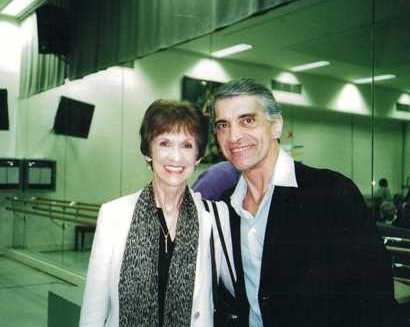
Stock was the middle child in a family of three girls born to Roy and Sylvia Stock. When Stock was quite small, the family moved to Perth, Western Australia, when her father, a journalist, took a job there. It was in Perth that she took her first dance lessons. When the family moved to Melbourne after a short time in Perth, Stock took up dancing more seriously at the Himing School of Dance where she studied the Cecchetti syllabus. As a teenager she studied with Paul Hammond who prepared her for her major examinations of the Royal Academy of Dance. Her dance training was interrupted for two long periods, however, first as a result of a severe bout of poliomyelitis and then following injuries sustained in a serious car accident.
Deferring a Royal Academy bursary to study at the Royal Ballet School, Stock joined the Australian Ballet, aged sixteen, for its inaugural season. But the following year, with a year’s leave of absence from the Australian Ballet, she took up her bursary and travelled to London. At the Royal Ballet School her main teacher in the theatre class, where she was placed because she had come from a company to the School, was Pamela May. Outside of the School she took classes with Maria Fay and after a nine month period at the Royal she took classes in Paris and then in Cannes with Rosella Hightower. Her classes in France were to satisfy van Praagh who thought that her dancing was very correct and that she needed a bit of French pizzazz. Before returning to Australia she danced with the Grand ballet classique de France and then with an Italian company.
Rejoining the Australia Ballet in 1965 she was cast in works by Antony Tudor and John Butler and her reputation as an exponent of dramatic roles grew. But after seven years she wanted what she has called ‘new pastures’ and joined the National Ballet of Canada on the recommendation of Rudolf Nureyev. A position as principal with the Royal Winnipeg Ballet followed. She was joined in Canada by Gary Norman whom she married while in Canada.
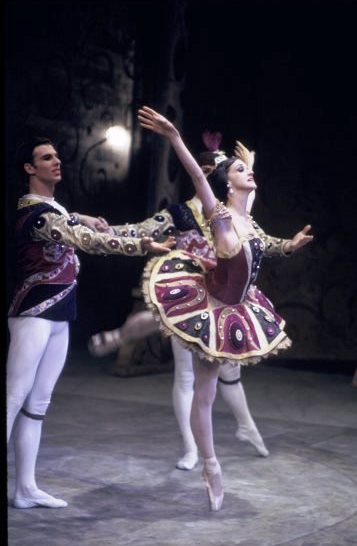
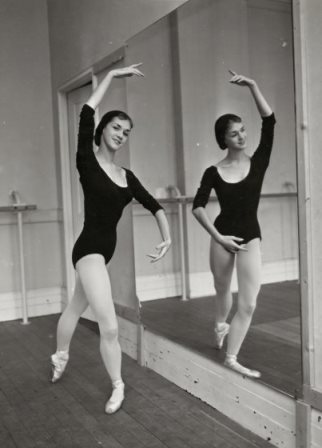
On their return to Australia Stock danced briefly with the Australian Ballet under Anne Woolliams before having her daughter Lisa and then directing the National Theatre Ballet School. Her next major step was the directorship of the Australian Ballet School which she took on at the end of 1989. Her last role was that of director of the Royal Ballet School. Stock has discussed her approach to her work in London at length in her oral history interview for the National Library of Australia, recorded in Melbourne in 2012. The audio is available online over the National Library’s website.The entire interview is a warm and informative account of her life and career and full of charming and sometimes very funny anecdotes about those she met and worked with during her life. Talking about her earliest dance experiences in Perth she says:
‘My debut on the stage was as a chicken and a hula girl. In the back of my mind I think I was already being a ballet mistress, teacher, director, because when we were doing our chicken dance I looked along the line and saw one of the chickens was very much out of line and lost. So I toddled over and shoved her back into line and got her into place and then went back to my own place and went on with the dance. I’ve always been obsessed with staying in line so it probably started at a very young age.’*
Stock is survived by her husband Gary Norman and their daughter Lisa.
Michelle Potter, 4 May 2014
* Gailene Stock interviewed by Michelle Potter, April 2012. National Library of Australia, TRC 6399.
12 April 2014 (matinee) and 19 April 2014 (evening), Joan Sutherland Theatre, Sydney Opera House
Having an Australian Ballet subscription ticket to a mid season matinee in Sydney has its benefits. Since most shows open in Melbourne by the time any show reaches Sydney early problems have usually been fixed. It is often an occasion too to see younger artists in major roles. I have a very clear memory of seeing Madeleine Eastoe (several years ago now) making her debut in Romeo and Juliet. A wonderful performance.
However, it often also means that I get a lack lustre performance as the season winds to an end. Such was the case with the first performance of Kenneth MacMillan’s Manon I saw this season. Leanne Stojmenov and Daniel Gaudiello danced well enough but struggled, I thought, with a cast that for the most part didn’t seem the slightest bit involved.
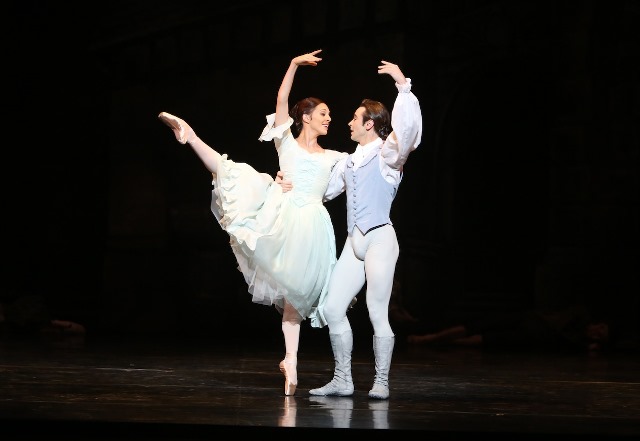
The second show I saw, however, made up for it all. My thoughts on this performance, which featured guest artists Alina Cojocaru and Johan Kobborg as Manon and des Grieux respectively, appear on DanceTabs at this link.
Michelle Potter, 22 April 2014
I was surprised to be contacted earlier this month by the curator of the Johnston Collection, Melbourne. David McAllister, artistic director of the Australian Ballet, will be a guest curator there in the first part of 2014 and will be adding some Australian Ballet costumes to the rooms of Fairhall, the house in which the collection of antiques amassed by dealer William Robert Johnston is displayed. I will be presenting a lecture at Fairhall in June—From bedroom to kitchen and beyond: women of the ballet. More later.
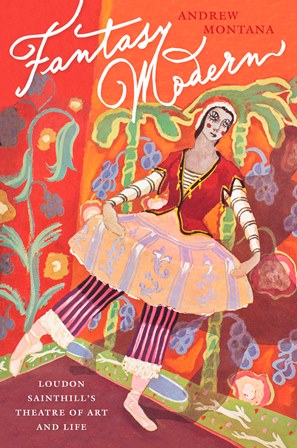
Over the holiday break I enjoyed reading Andrew Montana’s biography of Loudon Sainthill, Fantasy modern: Loudon Sainthill’s theatre of art and life, published in November 2013 by NewSouth Books. There are a few irritating typos and errors (Alicia Markova wasn’t married to Colonel de Basil—at least not as far as I know!) and some odd references in the notes. But, as ever, Montana has researched his topic very thoroughly and, while it is essentially a book written by an art historian, it gives a fascinating glimpse of the cultural background in which Sainthill and his partner Harry Tatlock Miller operated. That background of course includes Sainthill’s commissions for Nina Verchinina during the Ballets Russes Australian tours, as well as his work as a designer for Hélène Kirsova, and his activities during the Ballet Rambert Australasian tour of 1947–1949. In addition it was Harry Tatlock Miller who was responsible (in conjunction with the British Council) for bringing the exhibition Art for Theatre and Ballet to Australia. There is some interesting information too about the 1940s documentary Spotlight on Australian Ballet. So Fantasy Modern is interesting reading for dance fans as well as historians of theatre design.
I was pleased to hear recently from Barbara Cuckson that Sydney-born Bodenwieser dancer, Eileen Kramer, had returned to her city of birth. Not only that, she has reached the grand old age of 99. She is seen below on her 99th birthday wearing a Bodenwieser costume, which she designed all those years ago.
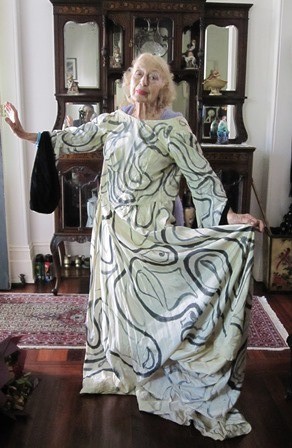
Eileen recorded an oral history interview for the National Library in 2003. It is available for online listening at this link.
In December I am always interested to know what tags have been accessed most frequently over the preceding year. Here is the list of the 10 most popular tags for 2013:
Hannah O’Neill; Ty King-Wall; The Australian Ballet; Ballets Russes; Paris Opera Ballet; Olga Spessivtseva; Dandré-Levitoff Russian Ballet; Leanne Stojmenov; Athol Willoughby; Meryl Tankard.
Visitors to the site may also be interested in what is probably the last comment for 2013. I am attaching a link to a book review I wrote in January 2012. Scroll down to the comments in which one reader queried whether the author of At the Sign of the Harlequin’s Bat, Isabelle Stoughton, is still alive. As you can read, she is.
And finally I couldn’t help but notice a sentence in a roundup of events for 2013 by Fairfax journalist Neil McMahon. Writing of Australian political happenings over the past year he said: ‘The policy pirouettes on both sides were en pointe, but graceless’. I’m not holding my breath for a graceful political scene in 2014. The dance scene might be better odds!
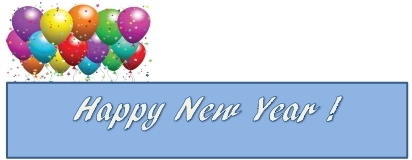
Michelle Potter, 31 December 2013
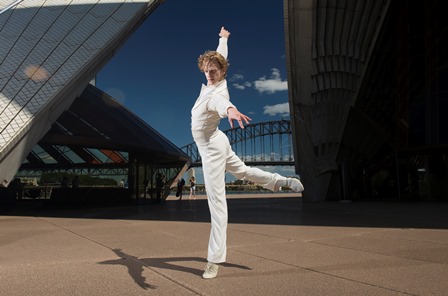
14 December 2019, Joan Sutherland Theatre, Sydney Opera House
My thoughts on David Hallberg’s guest appearance with the Australian Ballet in Alexei Ratmansky’s Cinderella were posted on DanceTabs on 16 December 2013. Below is the text. The DanceTabs link is still available and includes 11 comments that were made on the story by readers.
The DanceTabs text (without comments) is reposted below.
When David Hallberg was a child his inspiration to dance initially came from Fred Astaire whose old Hollywood movies Hallberg loved to watch. He admits he was obsessed. In those days he didn’t own a pair of tap shoes so, when Halloween was approaching, he attached coins to his shoes and tapped as a trick or treat act. Hallberg went on to take formal tap and jazz classes but it was not long before ballet drew him into a new dance world. His ballet teacher in Phoenix, Arizona, was Kee Juan Han, who recognised his talent but told him that it needed to be shaped. He was thirteen. There were no other boys in his ballet class but he persisted, nurtured by Han, and now, with his beautifully proportioned body, extraordinary feet, and easy, fluid technique he is the epitome of the danseur noble.
Hallberg has been in Sydney, Australia, guesting with the Australian Ballet as the Prince in Alexei Ratmanky’s new take on Cinderella, a production that was reviewed earlier in 2013 in DanceTabs. In this Cinderella the Prince makes his appearance early on in Act II, the ball scene. There is a huge build up to his entrance. The Prince’s four friends, who are in fact his minders, attempt to clear centre stage of guests; those guests engage excitedly with each other; and the Stepmother and her two daughters, Skinny and Dumpy, try to push themselves forward. The Prince arrives dressed in an elegant white suit with a tuxedo-style jacket worn over a smart vest. His entrance begins with a spectacular diagonal of grands jetés, and Hallberg’s entrance drew gasps and shouts of ‘bravo’ from the audience. His magnificently stretched jetés soared through the air, seemingly without effort. The perfectly placed grands pirouettes that followed whipped around in spectacular fashion, and the entrechats sprinkled throughout his solo were quite the most perfect examples of that step that I have seen.
Hallberg played the role of the Prince in a very royal manner. He was slightly imperious as he gave orders to his entourage and, while he greeted his guests at the ball in a charming manner, he was regally distant. Similarly, although when he first saw Cinderella, danced by Australian Ballet principal Amber Scott, he was instantly attracted to her, there was still something withdrawn about his reaction to her. There were moments when he seemed to me to be more like the Prince in a traditional Swan Lake Act I rather than a character in a twenty-first century reimagining of an old story.
Hallberg is no stranger to Ratmansky’s work. He has appeared in at least five others of his works and next year he will dance in Lost Illusions with the Bolshoi Ballet. Of working with Ratmansky, Hallberg says: ‘He is so clever. I love the nuances in his work. He has his signatures but he is so relevant, so of his era’. So Hallberg’s choice to play the Prince in a manner that was at odds with how the rest of the cast handled Ratmansky’s creation is a curious one. It is especially so because Hallberg says that when he is not in the theatre he loves to see other art and that his particular taste is for the contemporary. Hallberg’s dancing was, of course, stunning to watch. I especially admired his dancing in the scene where he travels the world looking for the owner of the glitzy shoe. Much of Ratmansky’s choreography for this section is full of lightning-fast moves that often change direction quickly and Hallberg threw himself into it with gusto. And his several pas de deux with Scott had an incredible lyricism. But to do full justice to Ratmansky’s reimagining of the story, this Cinderella needs a less classical reading than the one Hallberg gave us.
As a result the evening fell a little flat, especially as Scott’s portrayal of Cinderella lacked the sparkle and individualism that marked performances by Leanne Stojmenov, on whom the role was created. There were some stellar performances from others in the cast, especially Amy Harris as the Stepmother who let fly with her tantrums when her hairdresser failed to live up to her expectations, or when the shoe didn’t fit. But the work does need the Prince to be a strong, contemporary character. Despite the fact that he is royalty, his behaviour has to fit the contemporary mood of the ballet.
In many respects it is a shame that Sydney was chosen as the city to host Hallberg, despite the fact that Sydney clearly offers great photo opportunities. The inadequacies of the stage of the Joan Sutherland Theatre in the Sydney Opera House are well known. The stage is small and is short on wing space, and that’s even before we get to the orchestra pit, which is partly underneath the stage and is the bane of musical directors and orchestral players. Ratmansky’s Cinderella looked cramped in Sydney compared with the magical and mesmerising effect it had on the bigger Melbourne stage. However, it perhaps would not have made a difference had Hallberg danced in Melbourne. Space was not the major issue.
Hallberg gave his last show in Sydney on 14 December and then flew out to Paris to make his debut with the Paris Opera Ballet. I thought he missed the point of Ratmansky’s take on Cinderella. But it will take me a long while to get over those astonishing entrechats.
Michelle Potter, 16 December 2013
Featured image: David Hallberg in costume for the Prince in Alexei Ratmansky’s Cinderella. The Australian Ballet, 2013. Photo: © Wendell Teodoro

7 December 2013 (matinee), Joan Sutherland Theatre, Sydney Opera House
Taking a second look at Alexei Ratmansky’s Cinderella was something of a swings and roundabouts experience. The gains were special, the losses of course a little disappointing.
Seeing Leanne Stojmenov as Cinderella and Daniel Gaudiello as the Prince after they had performed those roles over and over in Melbourne and again in the first few Sydney shows indicated how well they had grown into their parts. Their pas de deux in particular were seamless, expressive and beautifully executed with hardly a slip anywhere. Gaudiello once again showed what an exceptional artist he is as he fell head over heels for his Cinderella, and what a good technician he is as well.
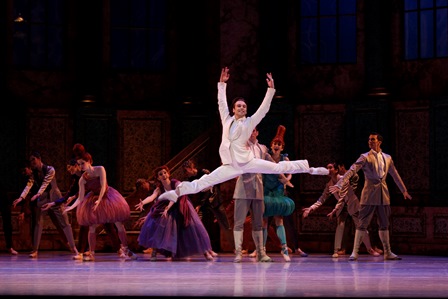
Stojmenov’s dancing showed how much she had absorbed the choreography into her very being. The beautiful way in which she conveyed the subtlety and nuances of Ratmansky’s vocabulary was an absolute delight. In particular she had captured the beauty and fluidty of Ratmansky’s arm movements with their distinctive swing and sway through space, and I also especially enjoyed her solo in the last act where she recalled the time she had with her Prince at the ball in the previous act.
I was also interested to hear David McAllister, in his public program conversation with David Hallberg after the show, that Ratmansky used the word ‘say’ rather than ‘do’ when setting his choreography on the dancers—‘you go over there and say such and such’. His emphasis on expression rather than simply execution is a sure reason why all the cast, but Stojmenov in particular, carry the storyline of Cinderella so well.
Another gain was seeing Eloise Fryer—there was an unexpected cast change announced just before the curtain went up—as the Dumpy Stepsister. She has a terrific sense of comedy and carried off the awkward and often hilarious choreography with great style. It was a huge romp and Ingrid Gow as the Skinny Stepsister really had to work hard to keep up with her.
The biggest loss was having to fit the show onto the stage of the Opera Theatre. I try not to make too many comments in this vein as it does nothing in the end. But in the case of Cinderella it resulted in a real loss I thought. The theatrical trick of a proscenium arch within a proscenium arch that was so clear in Melbourne was scarcely apparent in Sydney and the crammed-up feeling of the domestic scenes was unfortunate. And, while memory plays tricks I know, it seemed to me that Gaudiello’s choreography had been cut in the scenes where he travels the world searching for the owner of the slipper. Maybe I just missed some of those grands jetes in a circle and the spectacular finish where he jumped into the arms of his cortege of male friends. I’d be more than happy to be corrected!
I also missed Lynette Wills as the Fairy Godmother. While Jasmin Durham did a perfectly good job in the role, Wills brought a wide experience to her performance giving the role a strength of characterisation and sense of mystery that was missing in Sydney. I had also been looking forward to seeing once more those characters from the solar system who transport Cinderella to the ball but, while being closer had its advantages, the costumes are quite remarkable, being closer also made the sequence look a little too jumbled—too many characters that were too hard to identify individually.
But more than anything I thought the magical transformations that made the Melbourne opening so spectacular were lessened in Sydney. I was further back in the auditorium in Melbourne so maybe that had an effect but I suspect it was something else.
Nevertheless, Cinderella remains in my mind a very classy, strongly European-looking, beautifully-lit production that I look forward to seeing again and again.
Michelle Potter, 8 December 2013
My original post, and a healthy variety of comments from others, is at this link. See also my comments on David Hallberg’s performance as the Prince published by DanceTabs.
16 November 2013 (matinee), Joan Sutherland Theatre, Sydney Opera House
I was startled to see, when looking at the Australian Ballet’s website to check the casting for my Sydney subscription performance of Paquita and La Sylphide, that Paquita was advertised as a Romantic ballet—’the last flowering of the Romantic ballet’. Elsewhere on the website the program was described as ‘the first and last [of the] great Romantic ballets on one double bill’. The original, full-length Paris production of Paquita (1846) might have been in the Romantic tradition, although that is disputed by some, but what the Australian Ballet has been presenting is definitely not a Romantic work. Marius Petipa made additions to the original Paquita when he restaged his version in Russia in 1881 (1882 new style date). Those interpolations with music by Minkus are, I believe, what most companies now perform. The complete ballet was staged relatively recently (2001) by Pierre Lacotte for the Paris Opera Ballet, but not many other companies have a full-length production in their repertoire. Without the rest of the ballet, the Petipa arrangements can scarcely be called Romantic, although the Spanish overtones we see and hear in the Petipa excerpts do allude to the Spanish elements of the full-length ballet.
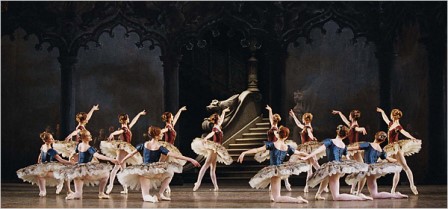
That aside, it was a thrill to see Daniel Gaudiello taking the male role in my Sydney viewing of the Australian Ballet’s excerpts from Paquita. What I love about Gaudiello’s dancing (apart from his technical abilities) is his wonderful approach to partnering. He is so attentive to and caring of his partner (Lucinda Dunn on this occasion) without being merely a ‘porteur’. When he stands back from her and lifts his arms to an open fifth position he is not only triumphantly showing her off as the ballerina, but also showing his own polish and charisma as a true ‘danseur noble’. He has great style.
Of the variations I especially enjoyed the second variation, subtly and gently danced by Jessica Fyfe, and the dancing of the two demi-soloists, Vivienne Wong and Benedicte Bemet, the latter certainly a rising personality.
I was pleased too that my previous disappointment with the staging of La Sylphide dissipated somewhat with a second look. This time I thought there was much more feeling for the Romantic style in the second act and a better contrast between the first and second acts.

Perhaps it was Reiko Hombo, who gave a strong, individualistic interpretation, beautifully danced, of the Sylph that made the difference. The lightness and height of her jump; her softly unfolding, beautifully controlled arabesques; her lovely rounded arms; and her supple upper body gave the right technical feel to the role. In addition, her interpretation was consistent and well thought through. There was a definite wickedness of intention there under all that charm as she made every effort to convince James of her wish that he join her in her forest realm. It brought home very nicely that ‘beautiful danger’ that respected Danish scholar Erik Aschengreen so perceptively wrote about many years ago as being a defining characteristic of the Romantic era. And Hombo carried this approach through into the second act.
Hombo was partnered by Chengwu Guo as James and he had, I thought, settled well into the role since my previous viewing. Perhaps again it was Hombo who made the difference. She gave him something to respond to, and as technical partners they work well together. Halaina Hills as Effie and Amy Harris as the lead Sylph in Act II also added a certain strength to the overall production. But I regret that the important role of Madge always seems to degenerate into something a little manic. It has been a long time since there has been a really powerful performance in Australia of that role. Without a strong and convincing Madge the ballet loses much of its intent.

My earlier post on this program is at this link.
Michelle Potter, 17 November 2013
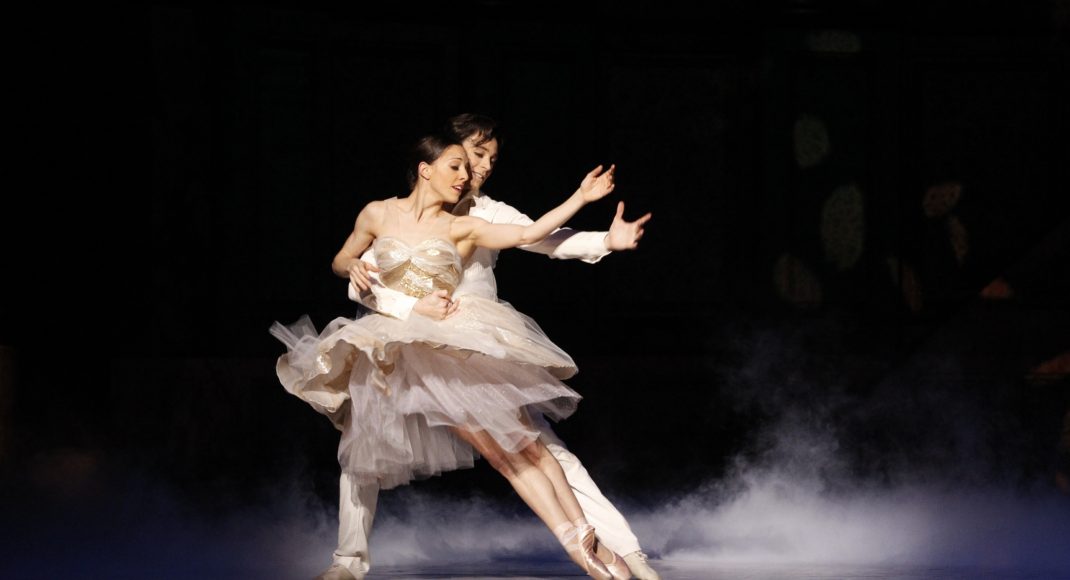
19 September 2013, State Theatre, Victorian Arts Centre
What a magical, mesmerising and eccentrically beautiful Cinderella Alexei Ratmansky has created for the Australian Ballet. I have to admit to goose bumps on many occasions so thrilling was the storytelling, the choreography, the scenic design and the performance.
The story we know so well is intact in its outlines but Ratmansky has made the work his own, and boldly so. The clues we get to the era in which this ballet is set come largely from the set and costumes by Jérôme Kaplan and from the projection design by Wendall K. Harrington. With their references to surrealist artists such as Salvador Dali and Giorgio de Chirico, and even perhaps to a Dada film, Fernand Leger’s Ballet mécanique, and the Bauhaus work by Oskar Schlemmer, Triadic Ballet, we can place this Cinderella in the 1920s or 1930s. But the universality and theatricality of the visual elements, including the Act I setting of a proscenium arch within the theatre’s own proscenium arch, put it into an era beyond eras.

As Cinderella, Leanne Stojmenov brought a range of emotions to the role. She was lost in dreams as she danced alone while the Stepsisters readied themselves for the Prince’s ball; full of sadness when the Stepmother slashed the portrait of her now dead mother; caring as she welcomed the somewhat outlandish Fairy Godmother into her home; shy as she tried out dance steps at the ball; pensive as she wondered whether she would meet the Prince again; and ultimately joyous as she danced the final pas de deux with him. It was a finely sculpted performance.
As the Prince, Daniel Gaudiello also presented us with a well-defined character with a strong personality. Dressed stylishly in a white suit he was the man in charge as he interacted with his guests and as he travelled the world seeking the owner of the slipper left behind at the ball. On this world tour we saw some of Gaudiello’s best dancing. A series of grands pirouettes finishing with multiple turns was beautifully executed. And what a spectacular exit he made as he left the stage at the end of that scene. But with his Cinderella he was a different man, much less hard-edged. And the final pas de deux is such a glorious piece of choreography. Two two bodies move together as one, bending and twisting, making complementary lines with arms and legs, and finishing so softly and gently.
At times the choreography was surprising as is so often the case with Ratmansky. Feet, arms, upper bodies, everything really, moved in unexpected ways. A pirouette had the foot at the cou de pied position, a cabriole appeared from nowhere, bodies bent forward when one expected them to bend back. And Ratmansky is a master at telling the story, creating a character, and giving clues to and motifs for future moments in the story through choreographic and dramatic methods. I wondered why the Fairy Godmother, played with style by Lynette Wills wearing a kind of bowler hat, long dark clothing and black glasses, disappeared into the grandfather clock in Cinderella’s house. But it became clear later. And the beautiful swirl of black-caped figures, holding Roman numerals and circling the stage as the Fairy Godmother advised Cinderella to leave the ball at midnight, was also reprised in a surprising way later.
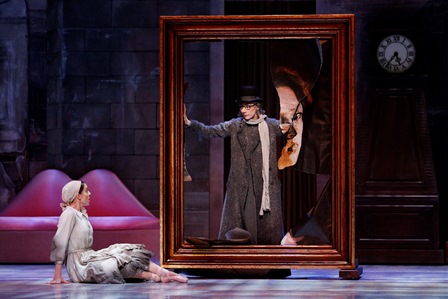
There were some wonderful performances from others in the cast. Ingrid Gow and Hailana Hills as the Skinny Stepsister and the Dumpy Stepsister respectively had some hilarious moments, as did Amy Harris as the rather vindictive Stepmother. I also admired the performances of the celestial bodies who transport Cinderella to the ball (no pumpkin coach in this production), although it was hard to identify the dancers from where I was sitting and another viewing is needed to match some of the various planets represented with their costumes.
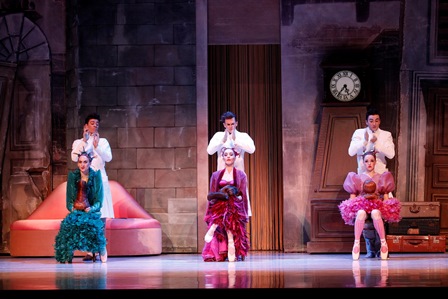
As for the scenic transformations, they were astonishing, breathtaking. It was not only the surprise they generated when they happened, but also the way the lighting by Rachel Burke was used to enhance every transformation, as well as the spectacular use of fabric of various kinds to assist the transformations—in fact the use of diverse fabric textures throughout the ballet in costuming and elsewhere gave us yet another magnificent scenic element. And musically, I have never heard the Prokofiev score sound so clear and so distinctive. Without wanting to take away from the orchestral playing, Ratmansky’s choreography is so attuned to the music that it adds a visual element to the sounds that allows me at least to hear the music differently.
I look forward to seeing this remarkable work again during the Sydney season. Let’s hope it remains in the repertoire for a long time to come. It is sheer magic, brilliantly conceived, and a truly immersive experience. All hail Ratmansky and his team.
Michelle Potter, 21 September 2013
Featured image: Leanne Stojmenov and Daniel Gaudiello in Cinderella. The Australian Ballet, 2013. Photo: © Jeff Busby
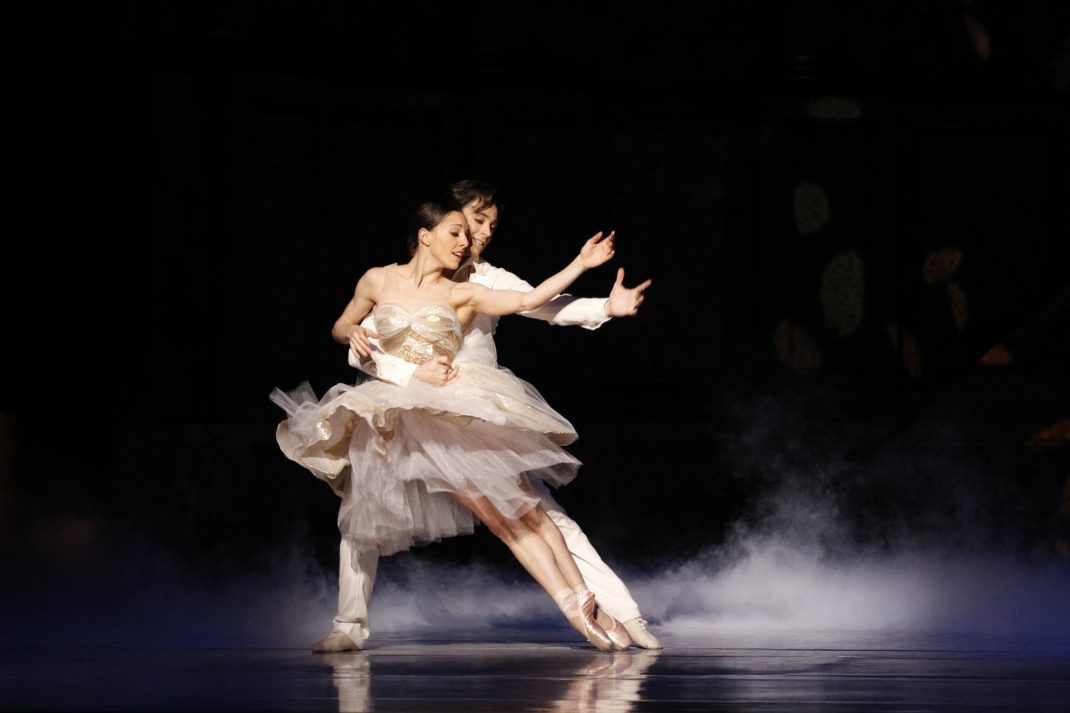
For my comments after a second viewing in Sydney follow this link. See also my comments on David Hallberg’s performance as the Prince published by DanceTabs.